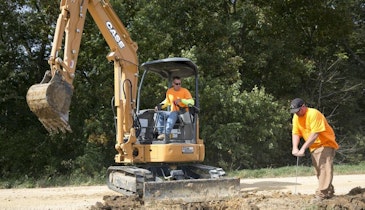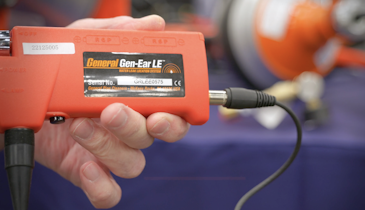Pumpers who come across problems when servicing their customers’ septic tanks have many options to remedy these situations. The repertoire of choices expands constantly, with new products being developed and new technology introduced to the industry at a rapid pace. Yet it’s always a delicate balancing act, weighing industry standard ideals against the realities of inclement weather, different soil states, and — critically — the customers’ ability to pay for a proposed fix.
And so these service professionals constantly balance subtleties of local zoning ordinances and engineering design restrictions, visual considerations, neighborhood politics and financial restrictions. Theirs is a unique blend of sincere desire to do what’s right for the customer, while maintaining the system’s ability to function at optimal levels, and with an eye toward economy and practicality.
These pumpers discuss their formulas for navigating the tricky waters of deciding when to repair, rejuvenate or replace an onsite system.
“In a lot of our areas up in the northern Black Hills, we have natural springs that will pop up, so we have to work around that,” no matter what other factors may be present, explains Ronnie Zembroskie of KLM Excavating. “We have to be environmentally conscious of that when we’re designing new systems.” His company specializes in installation, maintenance and repair of onlot systems and leachfields.
With failing systems, KLM opens up the tank, jets out lines and televises to watch the perc rate. If the system is deemed salvageable, the company will do a partial excavation, bringing in fresh soils to restore proper percolation. If not, the system will usually need to be completely replaced, because local conditions generally preclude a simple shift of leachfield location.
“A lot of times, when you have to contend with the (variable) soil and water tables, there’s very little area to move anything around on a lot,” says Zembroskie. “We’re also very often on steep hills, so the homeowner does understand that we sometimes have very little to work with.”
The unexpected groundwater springs also cause problems for KLM in such rehabilitation scenarios. “Sometimes water will come in and fill up the seepage bed or even the leachfield,” Zembroskie says. “Then we’ll either dig that up and put a barrier down to keep the groundwater from coming in, or put in a lift station system with a pump on it to purge it every so often, as engineers deem necessary.”
These groundwater considerations will continue to be a significant factor in how KLM chooses to deal with repair/replacement options. “As environmentalists keep pushing the freshwater issues, it’s getting to be a bigger deal all the time. Especially in the Black Hills, because we’ve got people moving in from all over the world for the area’s skiing, snowmobiling and natural beauty.”
In the end, says Zembroskie, the rehab option chosen always comes down to the economics of the customer, within the state Department of Natural Resources approval process. “It’s a real game trying to keep the state happy and trying to stay within your customer’s budget.” It’s a balancing act he’s used to, and one he believes in.
“We’ve always been environmentally conscious, and I’ve always paid attention to protecting the groundwater. I probably charge a little more than the average guy because of that, but when the job’s done, it’s done right. I always make sure we have all our permits and inspections and everything done the way it’s supposed to be. I have my system GPS documented, so the customer knows where to find it. All this just provides peace of mind … for them, and for us.”
Brad LaVoy’s company pumps and repairs residential and commercial onsite septic systems in extreme southeast Michigan, just a few miles north of the Ohio border. His approach to system maintenance is a stepped one.
“It’s usually a decision of hardware — the tank — versus natural processes — the bacteria and the leachfield,” says LaVoy. “If the tank’s just needing some repair, we can fix that. If the process inside is a little slow, we typically recommend Bio-Clean tank additive (Kinzie & Payne Biochemical Corp., Shreveport, La.) and get them on a program. If we pump it out and get them on the additive program and it’s still just not working, then it’s shot and we’ll have to replace the system.”
LaVoy generally allows a year for a marginal system to respond to a program of regular pumping and additives before deciding it’s a lost cause. “If you’re trying a couple times and it keeps backing up, you just need a new system.” Before beginning the Bio-Clean regimen, he tells customers about the possibility that their system may not respond to the additive and could fail completely. He finds that educating them about how the additive might work also helps them understand how their whole system functions.
The year of monitoring time, when systems fail to respond to the rejuvenation effort, provides a buffer for customers. It allows them to get used to the idea that they may need to have a new system installed, and to budget for that eventuality.





